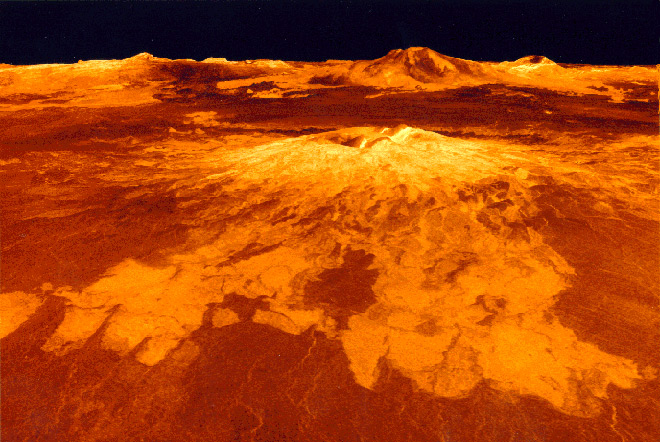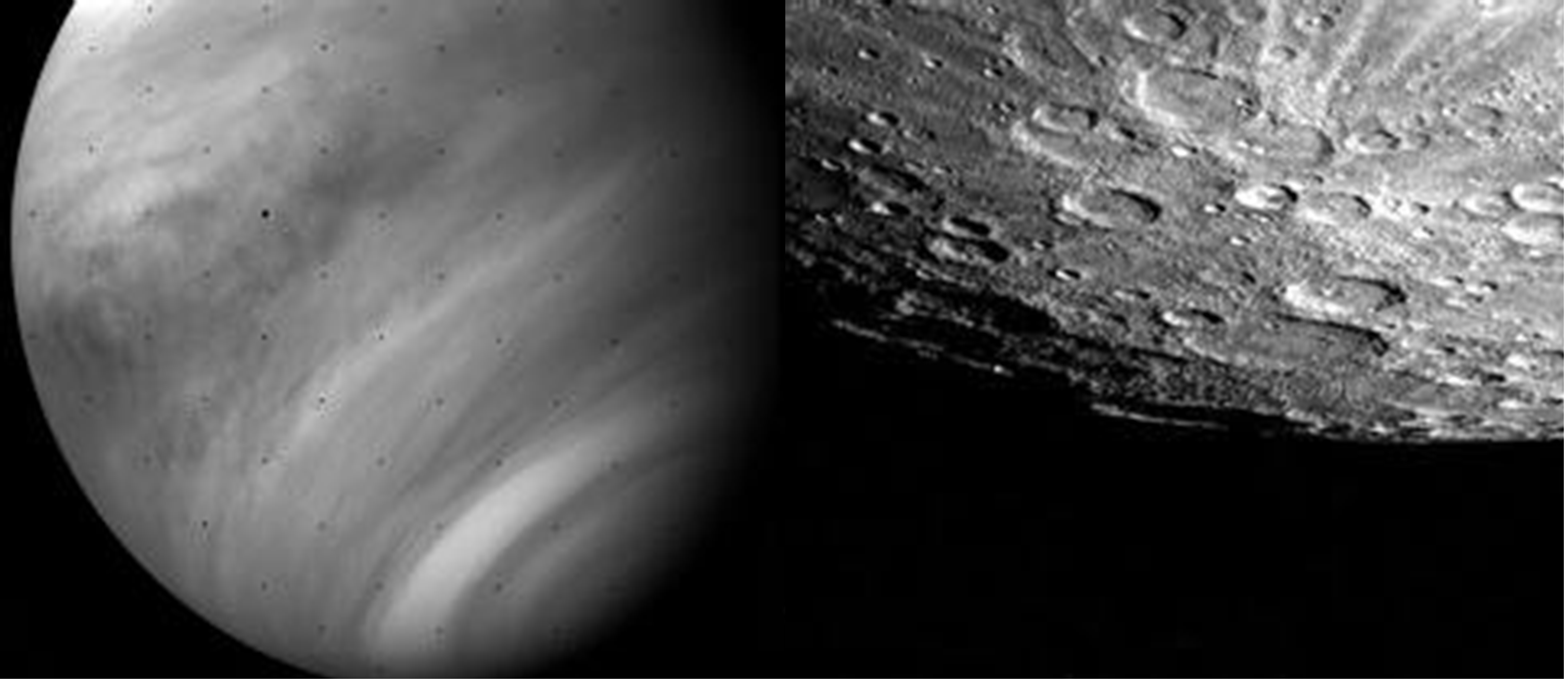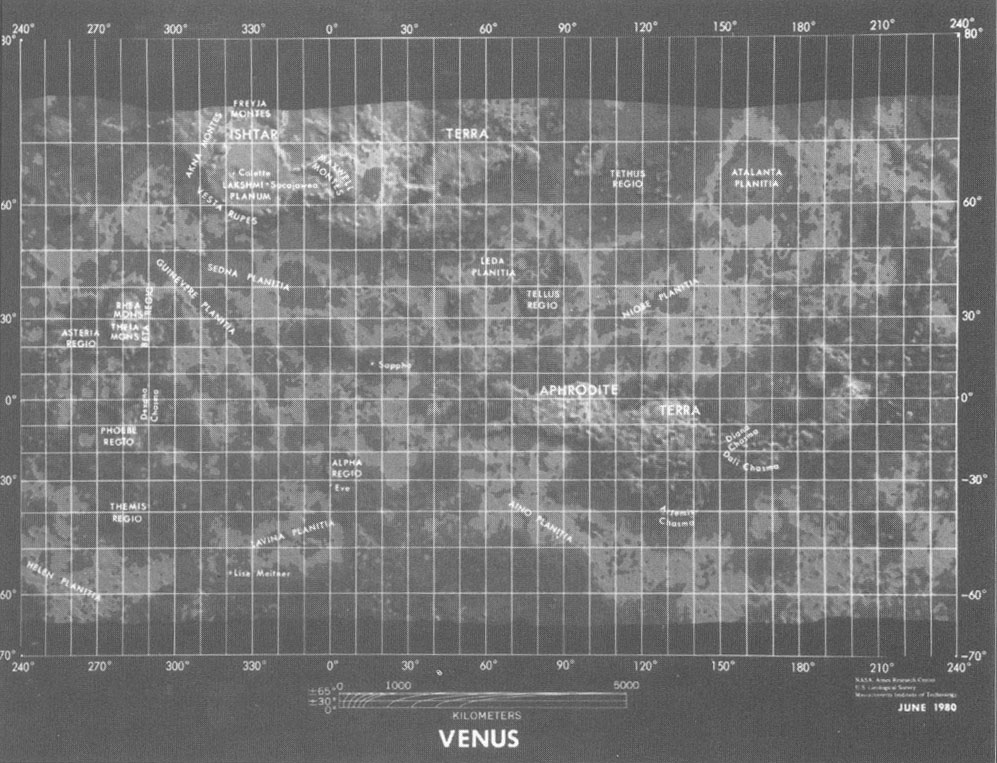
The 1960s were not only the era of Apollo and the race to the Moon, they were also a time for experimenting with technology that could get us to our closest planetary neighbours – Venus and Mars. The Soviets with the Luna program, and the United States with Ranger, Lunar Orbiter and Surveyor developed spacecraft systems for missions beyond Earth orbit. Their destination was the Moon. But the opportunity to extend the reach of robotic spacecraft to explore neighbouring planets led to the development of ambitious programs with multiple robotic probes and orbiters with the capability to go beyond the Moon.
In this blog we look at the technology and missions that unlocked the mysteries of Venus. Venus presented a total mystery before humans sent unmanned spacecraft there. The remarkable scientific discoveries by robotic spacecraft starting in the 1960s changed our understanding of our nearest planetary neighbour. But we also gained in many other ways. We developed new materials capable of withstanding extreme temperatures and acidity to cope with the Venus’ surface environment. We learned about the extreme effect on a planet of a runaway greenhouse contributing to a better understanding of the impact of rising levels of greenhouse gases here on Earth. We applied the laws of physics in developing new celestial navigation techniques to enhance spacecraft performance. We perfected remote sensing and radar technology that we use here on Earth today. Who would have thought that in going to Venus we would be able to exploit the technologies we used to explore that planet to help us find new sources of mineral wealth, oil and gas here on Planet Earth. It’s a great story and one in which the United States played a leading role.
Mariner Goes to Venus
The American Mariner program launched the Earth’s first interplanetary spacecraft. Mariner spacecraft used the proven designs of the Moon-based Ranger missions. Each spacecraft incorporated within its magnesium casing a panel of science experiments, communications, data encoding and computing, timers, attitude control for navigation, power supply, battery and rocket motor. The Mariner-2, the first to reach Venus, housed a 1,000 watt-hour silver-zinc cell battery recharged by two deployed solar panels. A directional dish antenna with a 3-watt transmitter extended from the side and below the craft receiving data from and relaying it to Earth ground stations.
The launch vehicle of the program was the American workhorse for medium payloads and the Mercury program, the Atlas, using a second-stage Agena booster to break out of Earth’s orbit. During Mariner-2’s flyby of Venus, in December 1962, it reached within 30,000 kilometers (approximately 19,000 miles) of the planet surface. Mariner made several discoveries including Venus’ slow retrograde rotation, high surface temperatures and atmospheric pressure, atmospheric composition, mostly CO2, its continuous cloud cover rising up to 60 kilometers (37 miles) above the surface, and no detectable magnetic field.
The Mariner program was not exclusively focused on Venus and included Mars as its other destination. So it wasn’t until Mariner-5, a surplus backup spacecraft to a Mars mission, that the Americans returned to explore Venus with a June 1967 launch and arrival in October when spacecraft passed within 4,000 kilometers (approximately 2,500 miles) of Venus’ surface while taking magnetic readings and studying the ultraviolet emissions from its atmosphere. With most of the remaining Mariners dedicated to Mars, it was 1973 before the United States launched the next Mariner to visit Venus. This time, however, the mission had two destinations, Venus and Mercury. The Mariner-10 mission flew within 4,200 kilometers (2,600 miles) of Venus’ surface before using its gravity to assist the spacecraft in navigating on to Mercury. This type of celestial navigation had never been tried before and today has become a standard practice in planetary missions.

America’s Next Venus Visitors
After Mariner-10, came Pioneer Venus. This ambitious research program combined two spacecraft, an orbiter and a multiprobe. Both were launched in 1978 using Atlas-Centaur rockets. Pioneer Venus-1, the Orbiter brought radar mapping to planetary exploration. Known as Range-Doppler or Doppler Radar, it could determine features, elevation and other surface characteristics hidden under the planet’s clouds. Although the formal mission of Pioneer Venus-1 ended in 1982, most of its instruments continued to operate for a decade after when it finally burned up after its orbit decayed. The map it compiled seen in the image below gave us the first comprehensive image of the planet’s entire surface showing plateaus and mountains as high or higher than those on Earth. In addition to the radar imaging the spacecraft also had 12 experiments onboard dedicated to studying the gravity, magnetic properties, and atmosphere of the planet.

Pioneer Venus-1’s companion, Pioneer-Venus-2, demonstrated remarkable robotic skills upon its approach to Venus, launching one large and 3 smaller probes, each designed to collect
data while in parachute-assisted controlled descent into the atmosphere. This too was an American first. The probes produced interesting data that indicated little atmospheric haze below 30 kilometers (approximately 17 miles). Two of the three small ones survived impact with the surface continuing to transmit with one continuing to send telemetry for more than an hour before succumbing to the high surface temperatures.
The Technical Achievements of Magellan
A decade later, Magellan, a second orbiter carrying new radar technology arrived in 1990 and settled into polar orbit around Venus. Launched by one of the American Space Shuttles, Magellan had a radar technology onboard with high-resolution imaging capability. This technology, called Synthetic Aperture Radar Imaging, or SAR for short, took advantage of characteristics within radar signals to capture the feedback, process it digitally and create high-resolution images. Magellan mapped 98% of planet creating images like the one seen below.
The comprehensive picture of Venus that Magellan relayed to Earth gave scientists an understanding of the planet’s geological record. Venus’ surface, unlike Earth, appeared to be very young, most of it only 500 million years old and created during a planet-wide period of active vulcanism. From data collected by Magellan scientists concluded that planet’s environment had remained consistent since that volcanic episode. And unlike Earth, Venus had no moving crustal plates with no continental drift at work.

Magellan’s mission ended in 1992 with the firing of its onboard rockets to allow it to enter and burn up in Venus’ atmosphere. Before that, however, the spacecraft not only provided spectacular radar maps showing details as small as 100 meters (330 feet), but also global gravity field maps. In Magellan mission controllers were able to test for the first time a new maneuvering technique called aerobraking, using the planet’s atmosphere to slow and steer a spacecraft. This was to prove useful in other interplanetary flights.
Since Magellan – Not a Lot Happening with Venus
Venus has largely been forgotten since the Magellan mission. The planet has been visited by spacecraft going to other planets in the Solar System using Venus as a gravity-assist for acceleration, deceleration and course correction. The Galileo spacecraft used Venus this way in 1989 on its way to study Jupiter. Cassini-Huygens did two gravity-assist flybys of Venus in 1998 and 1999 before heading to Saturn. And most recently, Messenger used Venus in two flybys in 2006 and 2007 to adjust its course and speed on its mission to Mercury.
In our next blog on the subject of space we look at the Soviet Venus missions and their contribution to the advancement of technology and our scientific understanding.







